Daffodils are one of my favourite bulbs to grow for early spring flowers that can add bright pops of colour to any garden or floral arrangement. I’m always a big fan of any flower than can naturalize or perennialize, rewarding me with reliable flowers back year after year. In this tutorial, I will cover the basics of growing, harvesting, conditioning, and storing daffodils, as well as how to use them in color palettes.
Daffodils are a part of the genus Narcissus, which contains many other species. Technically ‘daffodils’ are a group of Narcissus with trumpet-shaped heads; but often ‘daffodil’ and ‘narcissus’ are used interchangeably, as I do in this artcile.
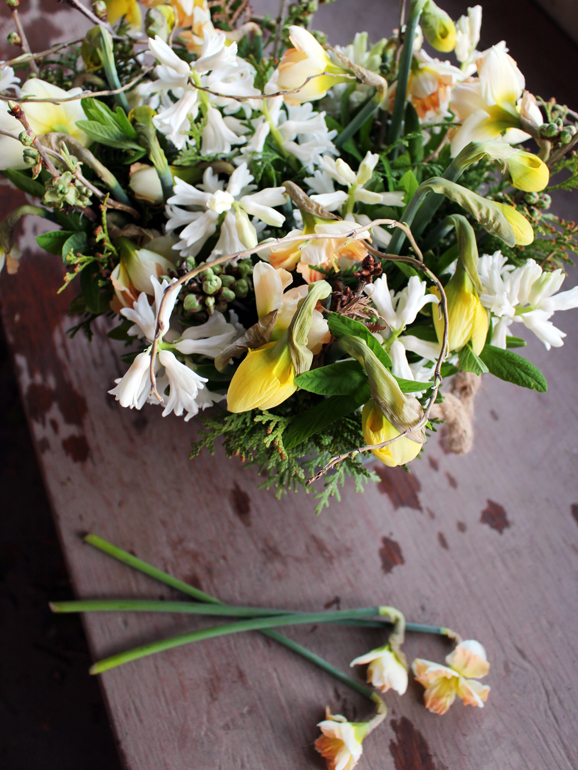
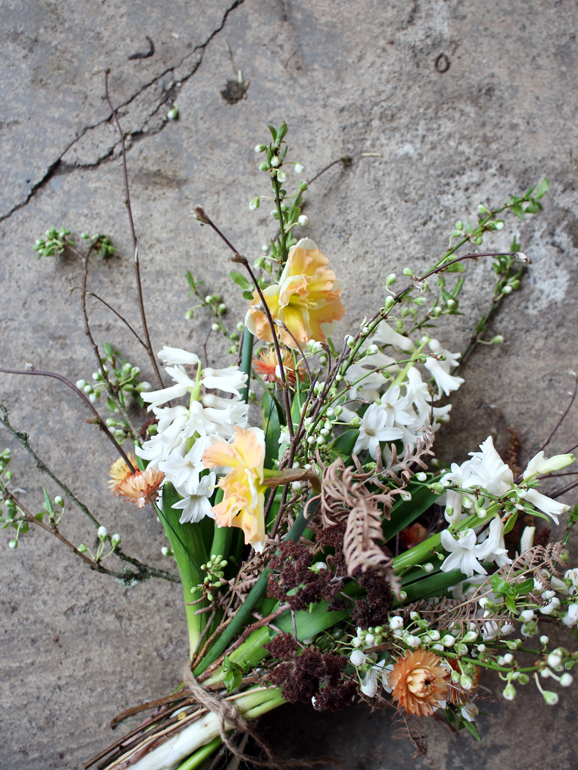
Growing Daffodils
Daffodils grow best in full sun to partial shade in well-draining soil. They prefer slightly acidic to neutral soil pH and should be planted in the fall, about 4-6 inches deep and 3-6 inches apart. Daffodil bulbs are toxic if ingested, so be sure to plant them where pets and children cannot get to them.
Daffodils require minimal care once planted, but it is important to keep the soil moist during their growing season. You can fertilize daffodils in the fall or early spring with a balanced fertilizer, but be sure not to over-fertilize, as this can cause the leaves to grow too quickly and weaken the bulbs.
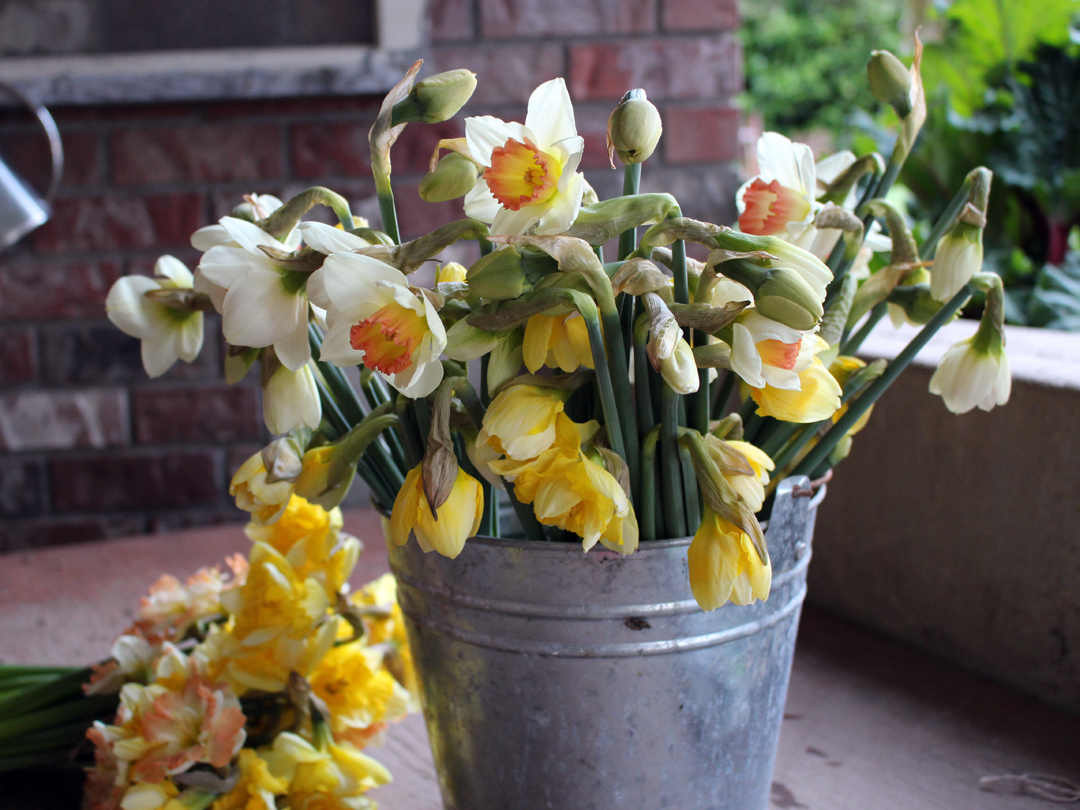
Harvesting Daffodils
Daffodils are ready to harvest when the flower buds have coloured up but before they have fully opened. This is called the “gooseneck” stage and it provides the best vase life. Additionally, I like to wait until the outer covering or “shell” around the bud has begun to dry and turn papery, revealing the bud within. To harvest daffodils, use sharp scissors or pruning shears to cut the stem just above the base of the plant (or use your hand to snap off the stems).
It is important to leave the foliage intact after harvesting the flowers, as the leaves help the bulb store energy for the following year’s growth. You can either leave the foliage in place until it dies back naturally or cut it back once it turns yellow or brown.
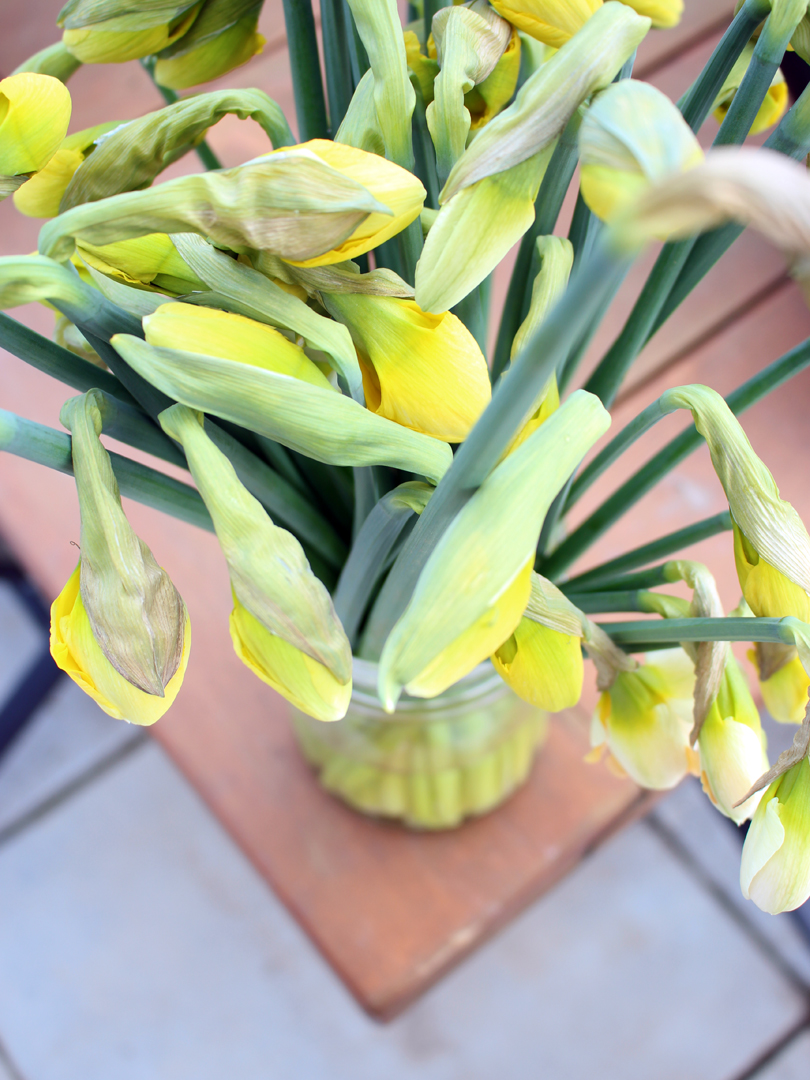
Daffodils harvested at “gooseneck” stage for the longest vase life possible.
Conditioning Daffodils
To prepare daffodils for use in floral arrangements, it is important to condition them properly. Conditioning involves removing any foliage that will be below the water line and placing the stems in water for several hours before arranging.
Daffodils exude a sap that can be toxic to other flowers and shorten their vase life, so it is important to keep them separate from other flowers for the first few hours after cutting. If I am planning to mix my daffodils in a floral arrangement, I first let them rest by placing the stems in an inch or two of water for at least 6 or seven hours before arranging them with other flowers.

Spring bouquets with a mixture of flowers and foliage including daffodils, tulips, and hyacinth.
Storing Daffodils for Use Later
Fresh cut daffodils can be stored in cool temperatures with little reduction to vase life . Store daffodils DRY at 0°C to 1ºC with 90% RH for up to 2 weeks. Some say that daffodils need to be stored upright as they will bend upwards; but I have never had this issue. I store mine fully wrapped in paper bundles – stems and buds.
Using Daffodils in Color Palettes
Yellow is a bright, cheerful color that is often associated with happiness, optimism, and warmth. Daffodils, with their bright yellow petals and orange centers, are a classic example of of spring; and yellow looks beautiful on its own as a monochromatic coour palette as well as paired with other colours.
In color theory, yellow is a warm color that pairs well with other analagous warm colors like orange, peach, coral, and red. It can also be used in complementary palettes, for example with cool colors like blue or lilac to create striking contrast and sophisticated palettes.
These days daffodils are also available in a wide variety of colours and flower types from white to cream to corals and butterfly to doubles to the classic trumpet shapes that we are all familiar with; thus daffodils lend themselves well to design with endless possibilities, whether we wish to convey romance or simply spread some cheer.
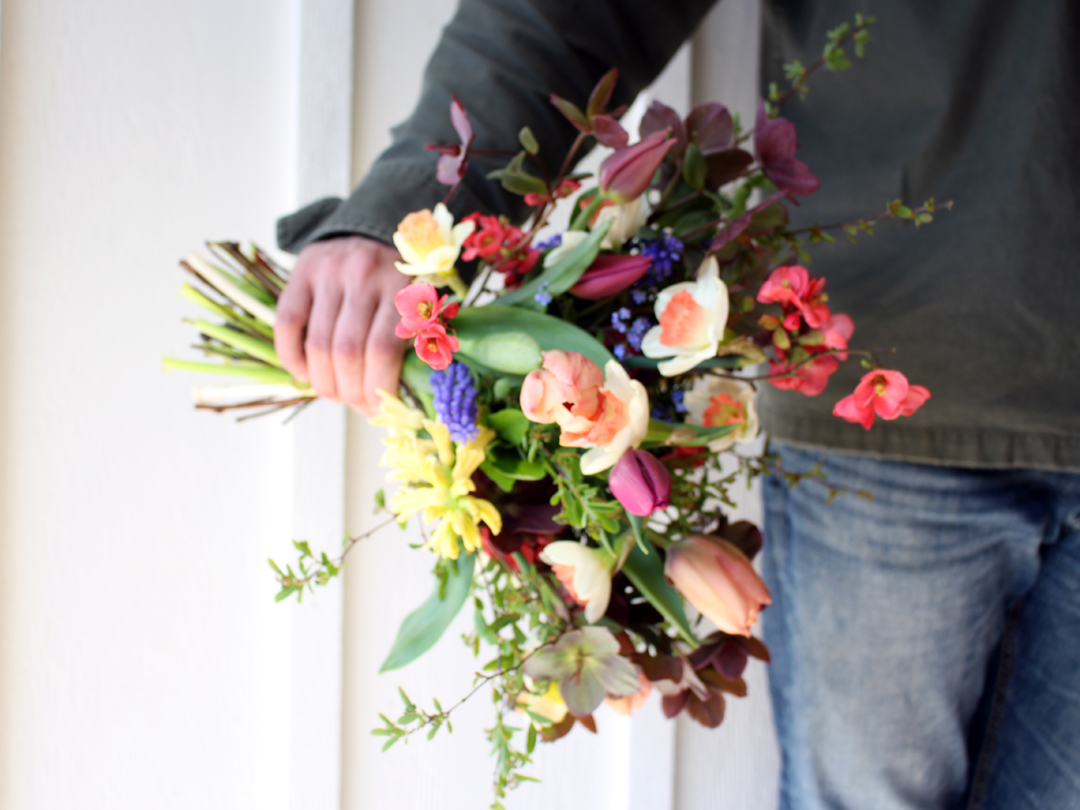
Spring spiral bouquet with narcissus and other spring beauties in a rainbow palette.
Conclusion
Daffodils are a popular and easy-to-grow spring-flowering bulb that can add bright pops of yellow, cream, coral, and white to any garden or floral arrangement. To grow daffodils, plant them in well-draining soil in the fall and provide them with minimal care. When harvesting daffodils, wait until gooseneck stage, then cut at the base of the stem and leave the foliage intact. To use daffodils in a color palette, consider pairing them with other warm or cool colors for a bright or subdued look.
The varietes of Narcisuss that you may spot pictured in this article include ‘Pink Parasol’, Cum Laude, ‘Lemon Beauty’, ‘Falmouth Bay’, and ‘Acroplis’.
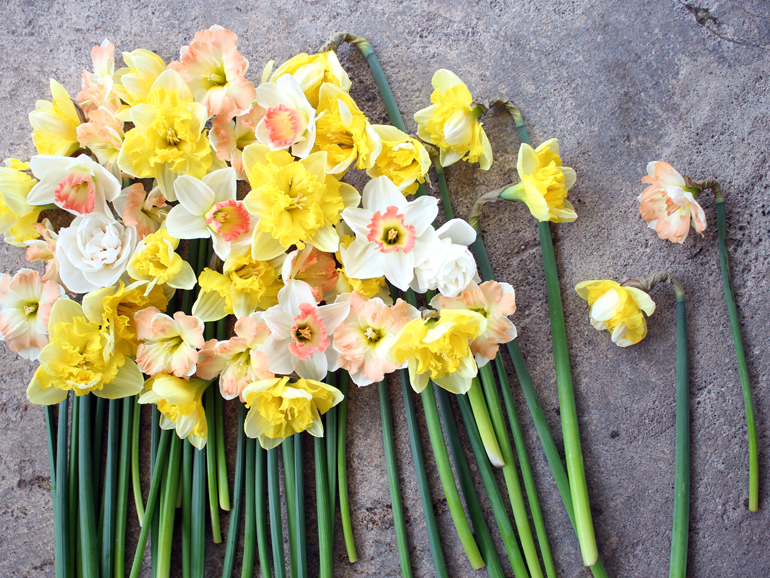
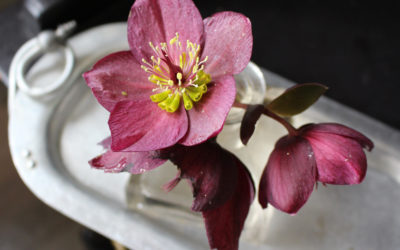
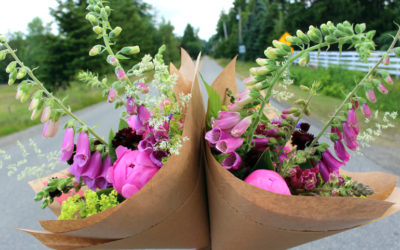
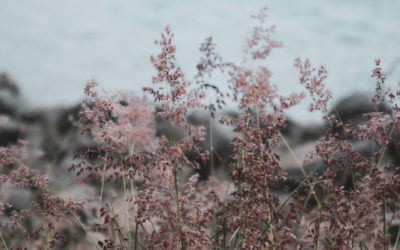

0 Comments